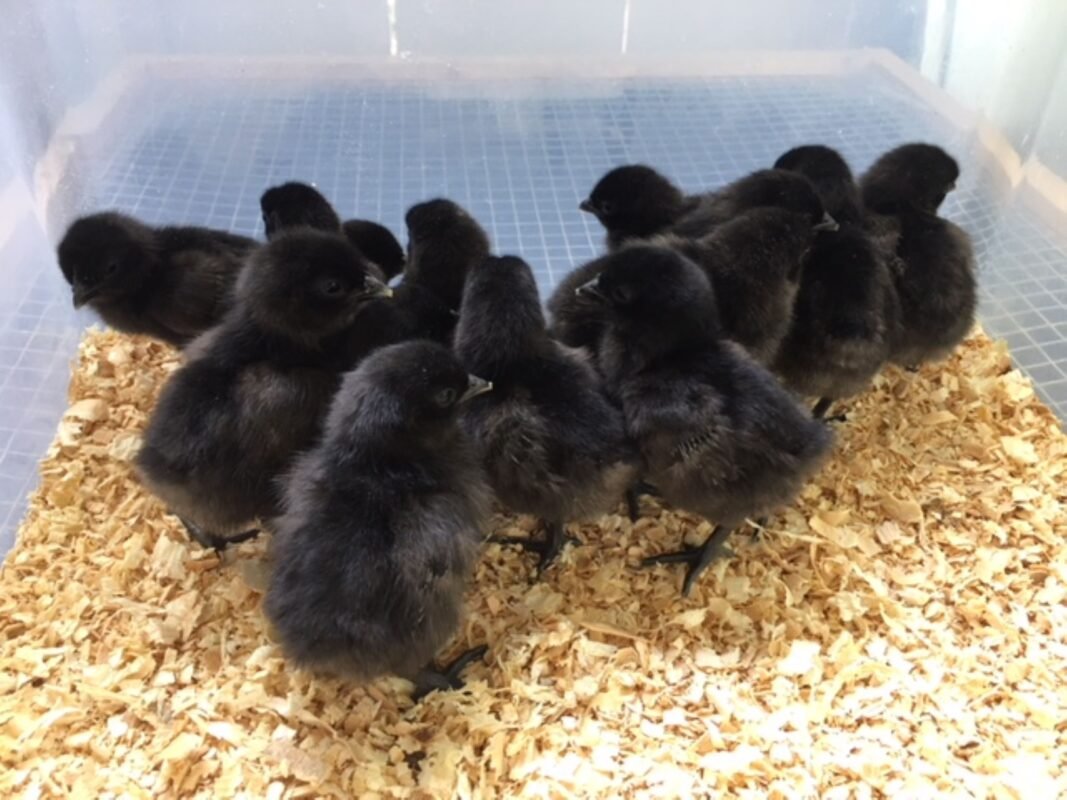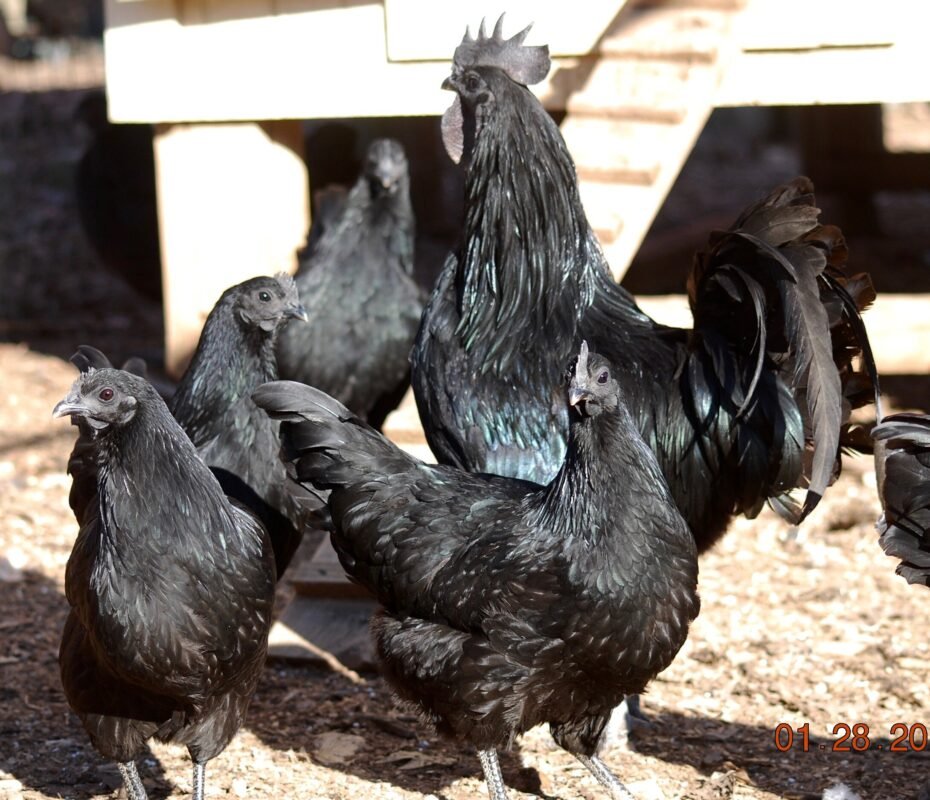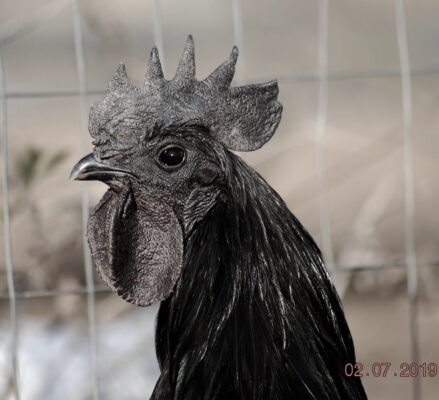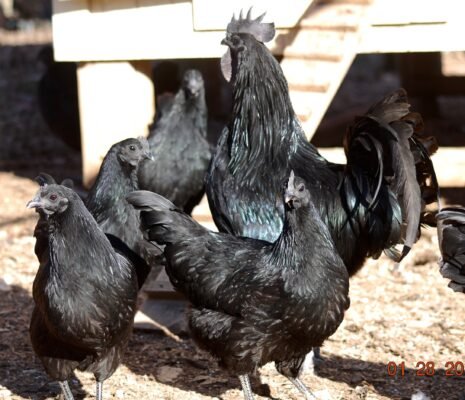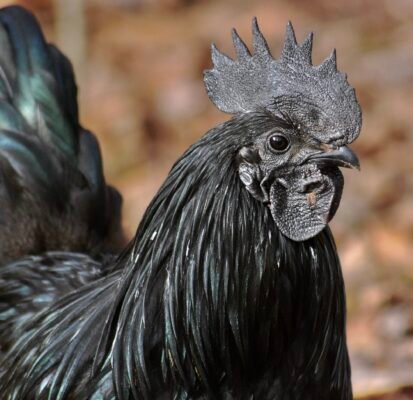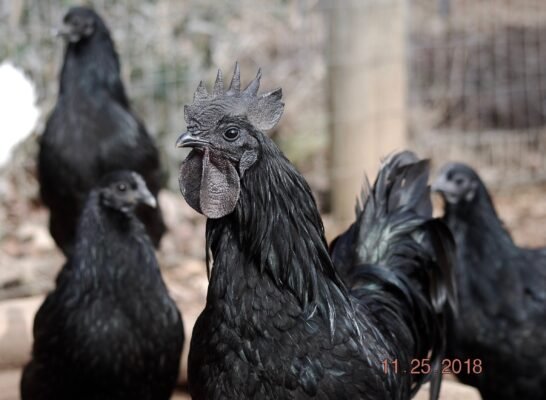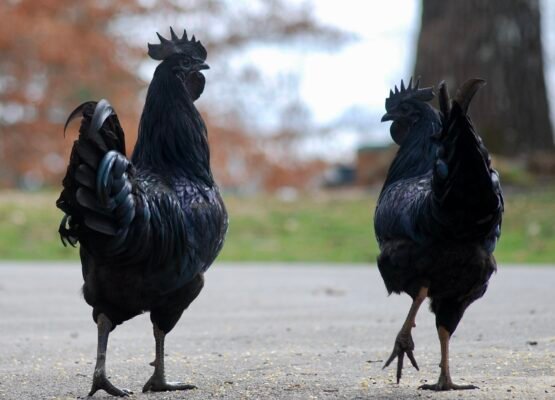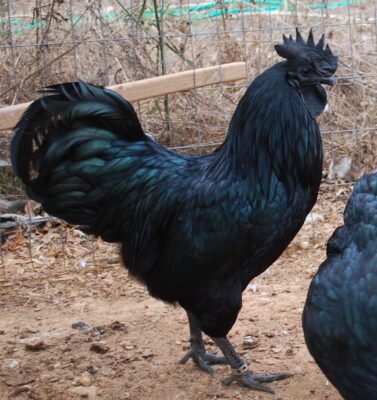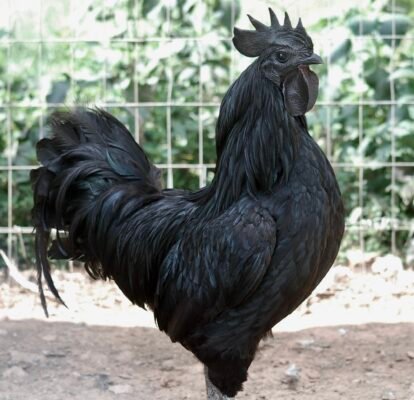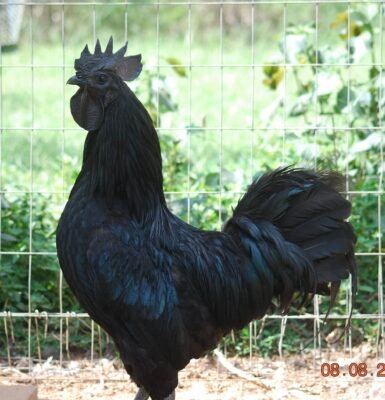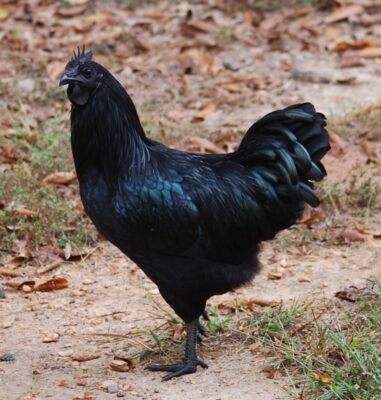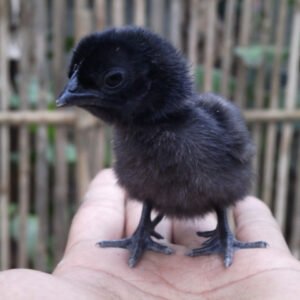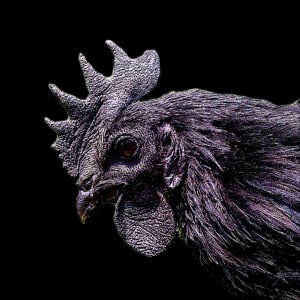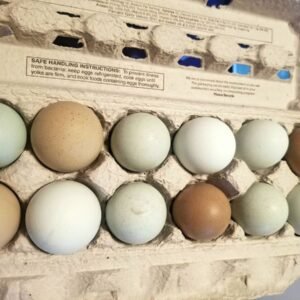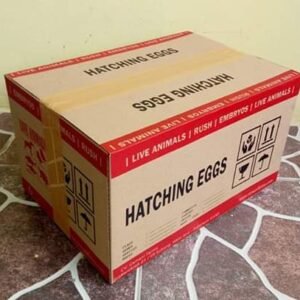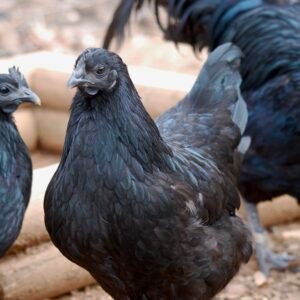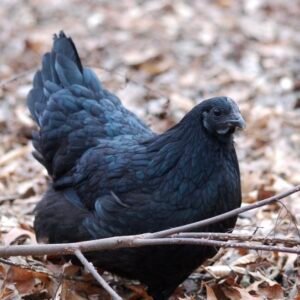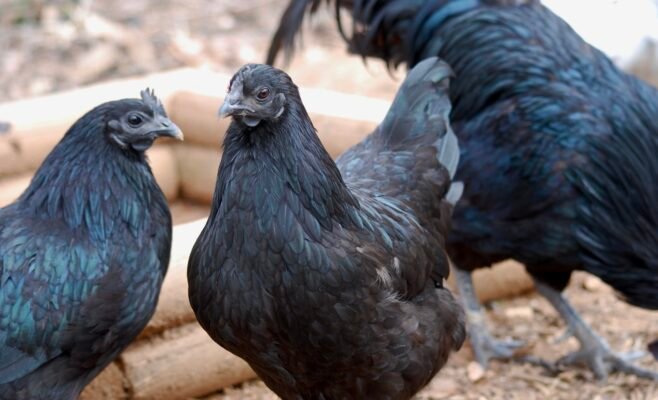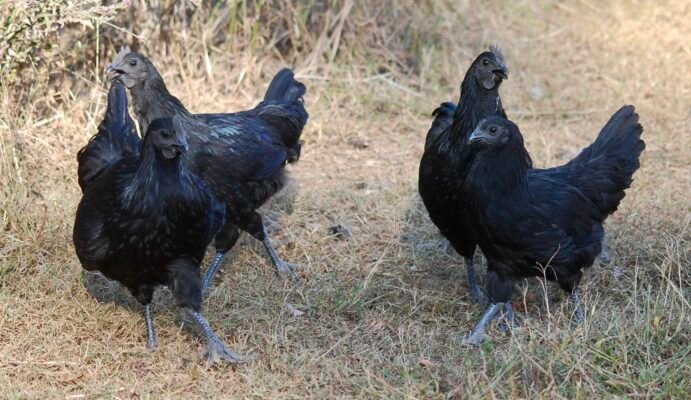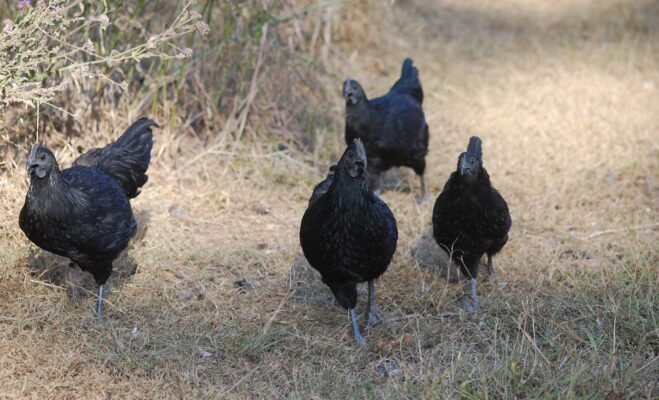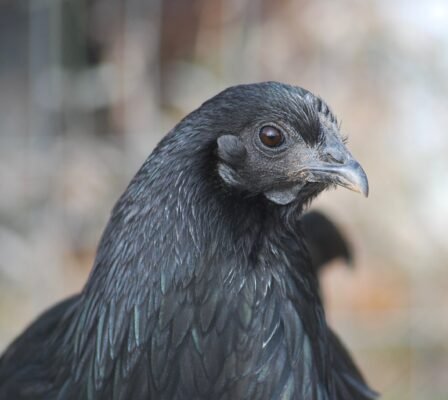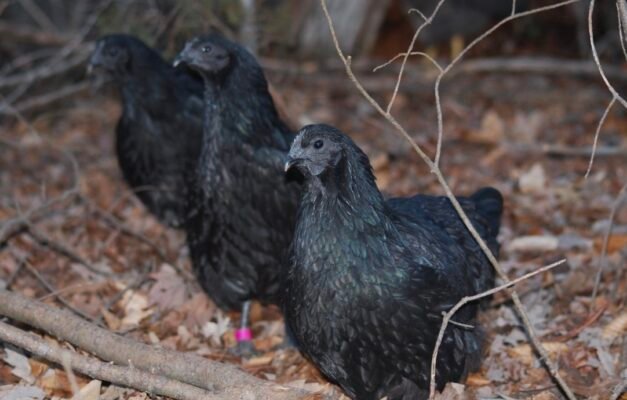World Wide Shipping
Best Discount Deals
Secure Payments
Ayam Cemani Chickens
The Indonesian chicken breed known as Ayam Cemani takes ‘dark’ into an entirely different realm. Their feathers are black. Their skin is black. Cut open an Ayam Cemani and you’ll find black muscle anchored to black bones. Even their organs are black. And what do you get for all this unrelenting blackness? One of the most beautiful chickens in the world; a chicken so spectacular and exotic that it is referred to as the “Lamborghini of poultry.”
In Asia, Ayam Cemani are renowned as much for the mystical powers of their black meat as they are for their extraordinary ink-black feathers that shimmer with a metallic sheen of beetle green and purple. The reason for these excessive black traits is a result of a fibromelanistic gene. This gene is not very common and is only seen in a few other chicken breeds. The fibromelanistic gene causes black pigment or melanin to build up in the skin and connective tissues.
The Ayam Cemani are believed to originate from Sumatra, Indonesia. They were reportedly first imported to Europe in the late 1990s. Greenfire Farms was able to locate and legally import into the United States the first pure specimens of this breed in 2014. We were also fortunate enough to recently import a new line of Ayam Cemani in 2023 directly from Belgium. These will be sold separately from the previous line. This line has much less mulberry. We hope this will help add more genetic diversity to our Cemani flock as well as yours.
Appearance and Behavior
Despite their hypnotic otherworldly beauty Ayam Cemani are usually hardy and low maintenance. They tolerate the heat well and are also relatively cold-hardy. It is important to note that the Ayam Cemani tend to be flighty and if they are spooked, you will know it! They normally all fly up and scatter at the sound of the rooster’s alarm.
The roosters normally weigh around 5 to 7 pounds at maturity and the hens are normally about 4 to 5 pounds at maturity. They are a medium-sized fowl. The hens will lay about 60 to 100 small to medium, cream-colored eggs in their first year. Their laying pattern is very different than most other breeds. Normally they start and stop laying throughout the spring and summer. Some sources we’ve read claim that they will lay 20 to 30 eggs and then stop laying for 6 months. We haven’t noticed that much of a gap between when they stop laying and start again but it is important to consider this when deciding to add these birds to your flock.
The hens tend to be very vocal when selecting their nestbox for the day and they are notoriously broody. There are some hens here that we’ve noticed that are broody for quite a while during the spring and summer.
Best Selling Products
Ayam Cemani Eggs
Buy Ayam Cemani Eggs Online
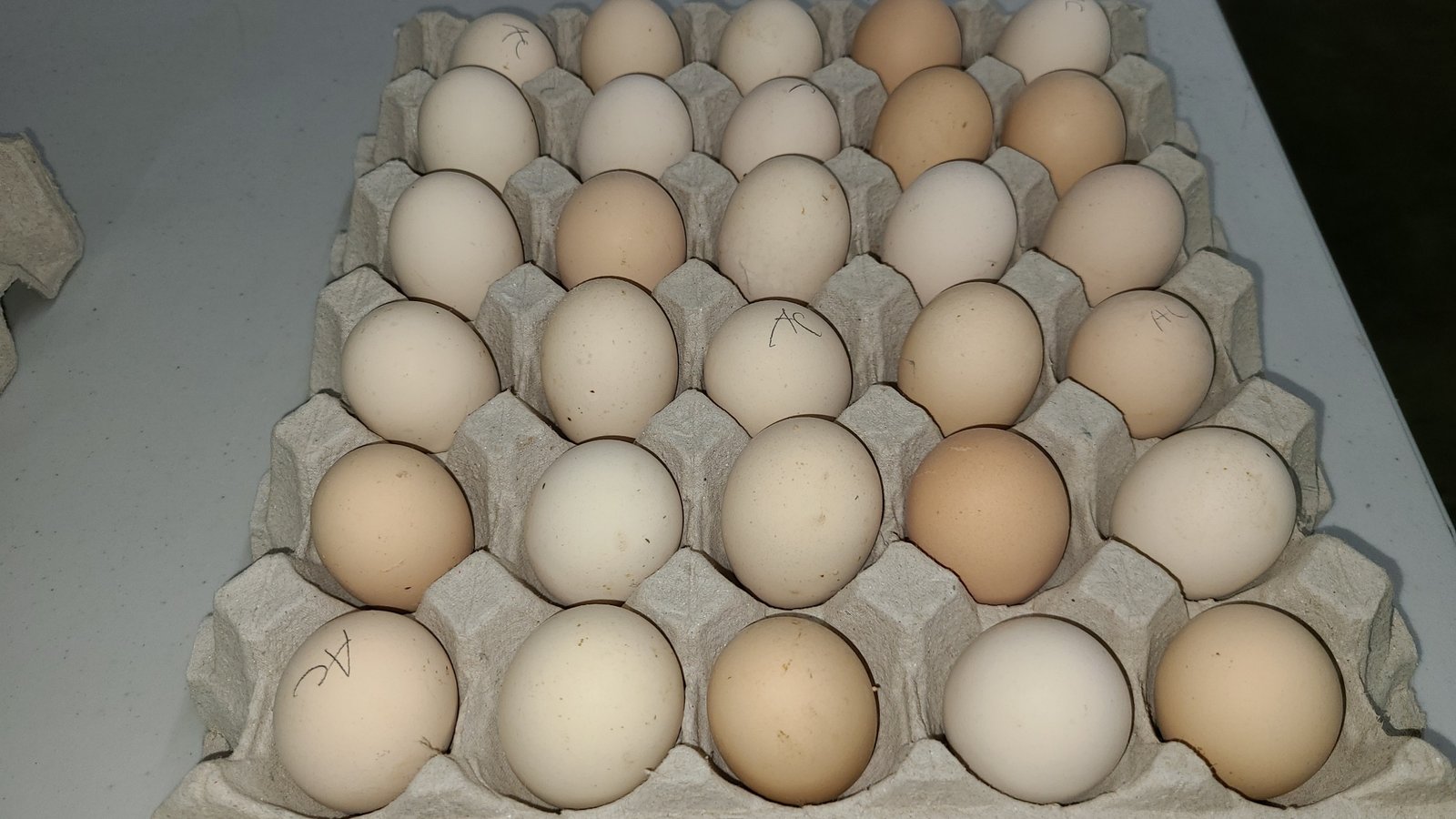
Hatching Eggs
Ayam Cemani Hatching Eggs
Ayam Cemani eggs are quite special, much like the bird itself! The Ayam Cemani is a rare and exotic chicken breed from Indonesia, famous for its striking all-black appearance — feathers, skin, organs, and even bones — due to a genetic condition called fibromelanosis. However, their eggs are a bit different from what some myths suggest.
Here’s what you need to know about Ayam Cemani eggs:
• Color: Despite the bird’s black pigmentation, Ayam Cemani eggs are not black. They’re typically cream-colored or light pinkish-beige.
• Size: The eggs are usually medium-sized, smaller than typical commercial chicken eggs.
• Production: Ayam Cemani hens are not prolific layers. They lay about 60–100 eggs per year, often in clutches — meaning they lay for a few weeks and then take a break.
• Rarity and Price: Because these birds are rare and lay eggs infrequently, the eggs can be quite expensive and sought after, especially for breeding purposes.
• Myth and Symbolism: In Indonesian culture, the Ayam Cemani is considered a mystical bird, believed to bring good fortune and have spiritual significance.
Ayam Cemani Hens
Ayam Cemani Hens For Sale
Ayam Cemani hens are visually striking. They exhibit a condition known as fibromelanosis, a rare genetic mutation that causes hyperpigmentation. This results in the bird’s skin, feathers, beak, comb, wattles, muscles, organs, and even bones being completely black. The intensity of the black coloration can vary slightly between individuals, but true Ayam Cemani hens are uniformly black inside and out.
The hens typically weigh between 3.5 to 4.5 pounds (1.5 to 2 kg), making them slightly smaller than their male counterparts. They have a sleek, upright posture, with long legs and a graceful gait. Their eyes are dark, almost blending into their black faces, giving them a mysterious, otherworldly appearance. The comb and wattles are small and black, contributing to their streamlined look.
Ayam Cemani hens are known for being relatively docile and calm, though they can be somewhat shy compared to more common chicken breeds. They tend to bond closely with their keepers if raised with care and attention from a young age. Their alertness makes them excellent foragers, and they are quite hardy, adapting well to various climates. In a flock setting, Ayam Cemani hens are generally peaceful, though they may be slightly more reserved. They prefer to avoid conflict, often keeping to themselves rather than engaging in pecking order disputes. This makes them a good choice for mixed flocks, as long as other birds are not overly aggressive. One of the most intriguing aspects of Ayam Cemani hens is their egg-laying behavior. Contrary to some myths, Ayam Cemani eggs are not black. Instead, they are typically cream-colored or light pinkish-beige, providing a striking contrast to the hens’ dark plumage.
Ayam Cemani hens are not prolific layers. On average, they produce about 60 to 100 eggs per year. Their laying pattern is unique: they tend to lay in clutches of about 20 to 30 eggs and then take a break for several months before resuming. This intermittent laying cycle makes their eggs highly sought after, particularly for breeding purposes.
When it comes to broodiness, Ayam Cemani hens show moderate tendencies. Some hens are naturally inclined to sit on their eggs and raise their chicks, while others may require the use of an incubator to ensure successful hatching. Due to their rarity and the high value of their eggs, breeders often monitor the hens closely during the incubation period. In Indonesian culture, Ayam Cemani hens are more than just poultry; they are symbols of mysticism and spiritual power. Many people believe that these birds have a direct connection to the spirit world and that their presence can bring protection and prosperity. The hens, in particular, are associated with fertility and abundance, making their eggs a coveted item in rituals and ceremonies.





